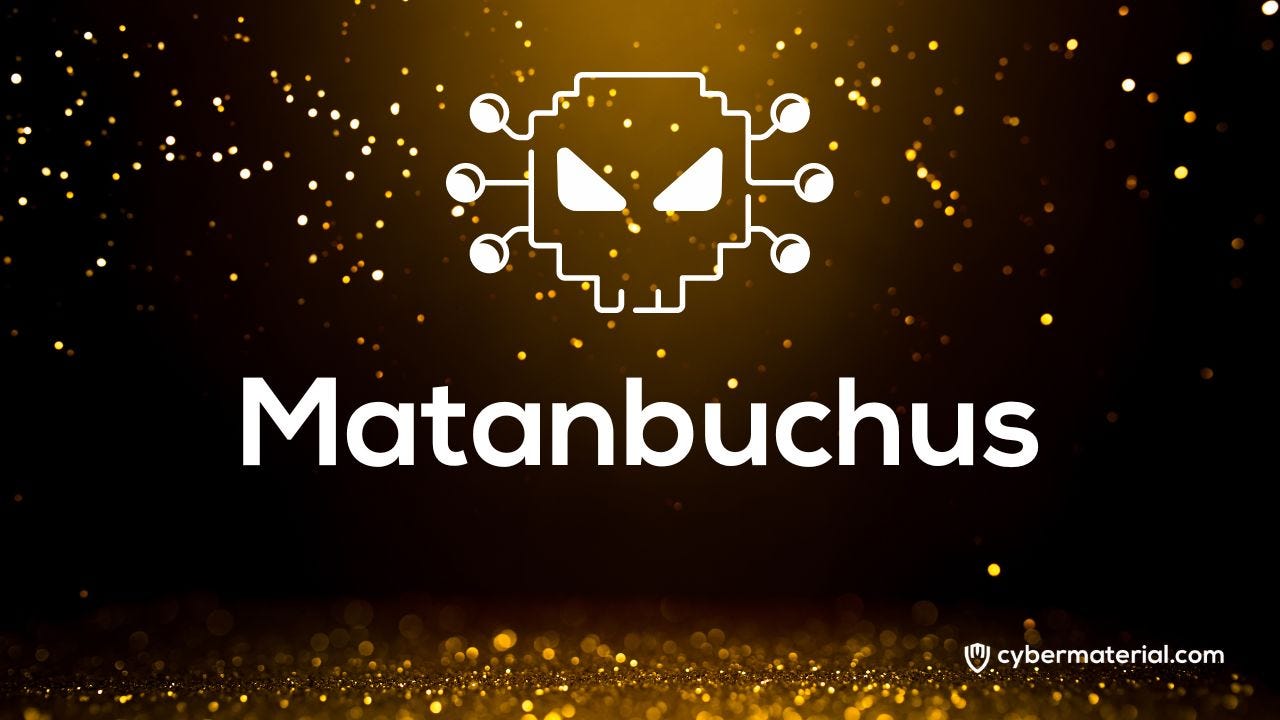
Matanbuchus
Type of Malware
Dropper
Country of Origin
Russia
Targeted Countries
United States
Belgium
Date of initial activity
2021
Associated Groups
BelialDemon
Motivation
Financial gain
Attack Vectors
Phishing
Targeted Systems
Windows
Overview
Matanbuchus is a sophisticated and increasingly concerning piece of malware that has emerged as a significant threat in the cybersecurity landscape. Known for its stealthy operation and advanced capabilities, Matanbuchus has garnered attention from researchers and security professionals due to its ability to evade detection and execute complex attacks. This malware operates with a level of sophistication that makes it particularly challenging to identify and mitigate, posing substantial risks to both individual users and organizations. The primary objective of Matanbuchus is to compromise systems and establish a foothold within the target environment. It typically enters through various vectors, including phishing campaigns, malicious attachments, or exploit kits. Once inside, Matanbuchus employs a range of techniques to maintain persistence and avoid detection. Its design allows it to operate silently in the background, often leveraging advanced obfuscation methods to hide its presence from traditional security measures. One of the distinguishing features of Matanbuchus is its modular architecture, which enables it to execute a range of malicious activities. This modularity allows the malware to be adapted and customized for different attack scenarios, making it a versatile tool for cybercriminals. It can perform various functions, such as data exfiltration, credential theft, and remote access, all while avoiding detection through sophisticated anti-forensic techniques.
Targets
Information Educational Services
How they operate
The infection process typically begins with a phishing campaign, where attackers send deceptive emails containing malicious attachments or links. Once the target interacts with these phishing emails—by opening an attachment or clicking on a link—the malware is executed on the victim’s system. Matanbuchus often employs scripting languages like PowerShell to execute commands and scripts, enabling it to carry out initial actions and establish a foothold on the infected machine. Persistence is a key feature of Matanbuchus. To maintain its presence across system reboots, the malware may alter registry keys or create startup folder entries. This ensures that it continues to operate even after the system is restarted. Additionally, Matanbuchus might schedule tasks or jobs to execute at regular intervals, reinforcing its persistence and making it harder for security teams to remove. In terms of privilege escalation, Matanbuchus may exploit known vulnerabilities to gain elevated permissions on the compromised system. This capability allows it to perform actions that require higher levels of access, further solidifying its control over the machine. To evade detection, the malware employs advanced obfuscation techniques, including encrypting or disguising its files and processes. It may also use rootkits to hide its presence from both the operating system and security software. Credential access is another crucial aspect of Matanbuchus’s operation. By extracting sensitive credentials from the compromised system, the malware facilitates lateral movement within the network. It uses these credentials to access additional systems, expanding its reach and potential impact. For reconnaissance, Matanbuchus gathers detailed information about the system’s configuration and environment, allowing it to tailor its actions more effectively. Lateral movement is achieved through methods such as remote file copying, enabling Matanbuchus to spread to other systems within the network. Once it has established a presence on multiple machines, it stages and collects valuable data before exfiltrating it. Data exfiltration is typically conducted over the command and control (C2) channel, where stolen information is sent to remote servers controlled by the attackers. In some cases, Matanbuchus employs encryption techniques to lock files on the victim’s system, potentially demanding a ransom or disrupting business operations. This final stage underscores the malware’s ability to cause significant damage and highlights the importance of robust defenses and proactive threat management.
MITER Tactics and Techniques
Initial Access (TA0001): Phishing (T1566): Matanbuchus often uses phishing emails to deliver its payload, tricking users into opening malicious attachments or clicking on harmful links. Execution (TA0002): Command and Scripting Interpreter (T1059): The malware may use PowerShell or other scripting languages to execute commands and scripts on the compromised system. Persistence (TA0003): Registry Run Keys/Startup Folder (T1547.001): Matanbuchus might modify registry keys or create startup folder entries to ensure it remains active after a reboot. Scheduled Task/Job (T1053): It may create scheduled tasks or jobs to maintain persistence and execute at specified intervals. Privilege Escalation (TA0004): Exploitation for Privilege Escalation (T1068): Matanbuchus might exploit vulnerabilities to gain higher privileges on the compromised system. Defense Evasion (TA0005): Obfuscated Files or Information (T1027): The malware employs various obfuscation techniques to hide its presence and evade detection by security tools. Rootkit (T1014): It may use rootkit functionalities to conceal its presence and activities from the operating system and security software. Credential Access (TA0006): Credential Dumping (T1003): Matanbuchus can extract credentials from the compromised system to facilitate further attacks or lateral movement. Discovery (TA0007): System Information Discovery (T1082): The malware may gather information about the system and its configuration to tailor its actions and attacks. Lateral Movement (TA0008): Remote File Copy (T1105): It might move laterally within a network by copying files to other systems. Collection (TA0009): Data Staged (T1074): Matanbuchus can collect and stage data from the compromised system before exfiltration. Exfiltration (TA0011): Exfiltration Over Command and Control Channel (T1041): It may exfiltrate stolen data through its command and control (C2) channel to a remote server. Impact (TA0008): Data Encryption for Impact (T1486): In some cases, Matanbuchus may encrypt files on the victim’s system to demand ransom or disrupt operations.
References
The post Matanbuchus (Dropper) – Malware first appeared on CyberMaterial.


